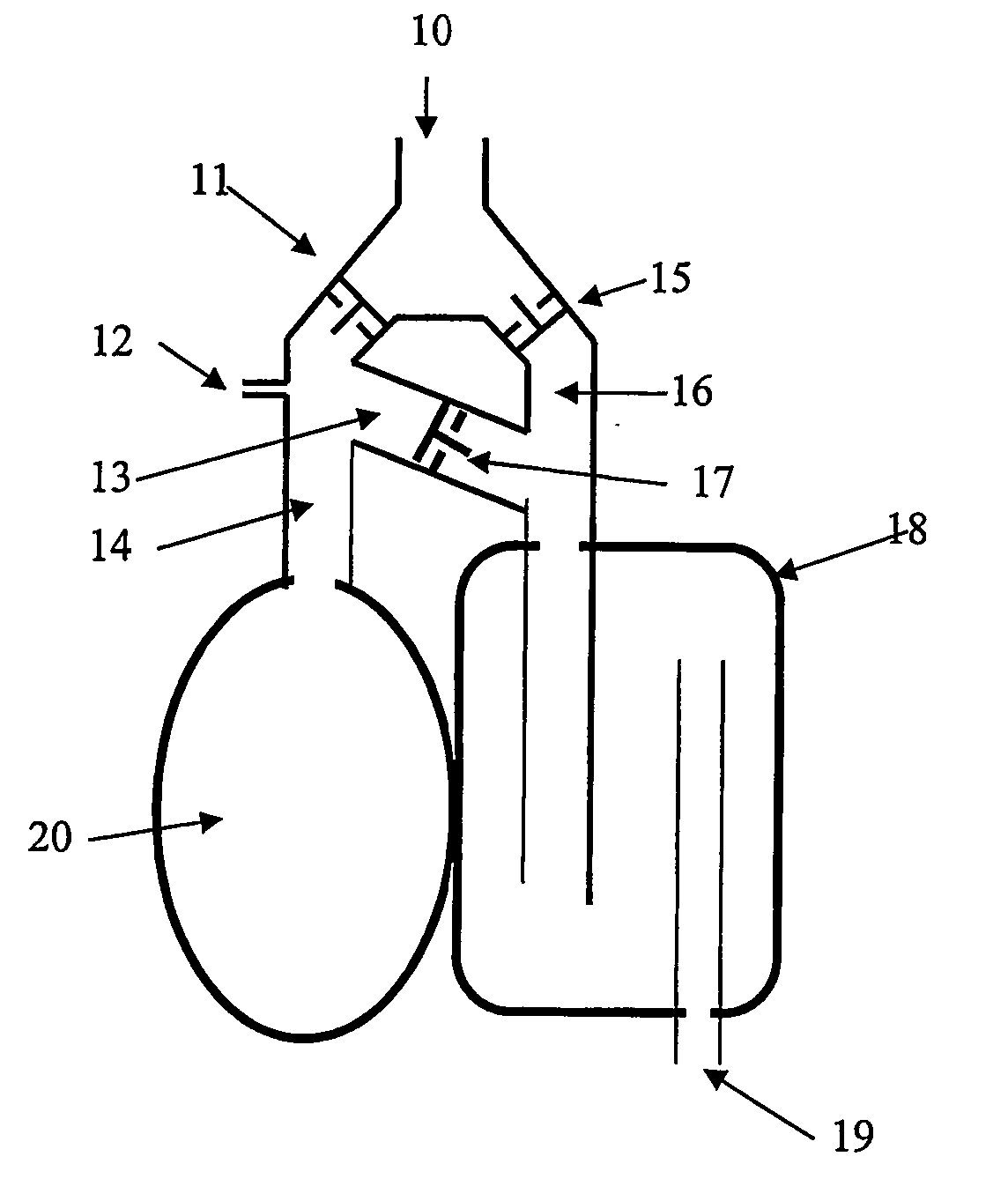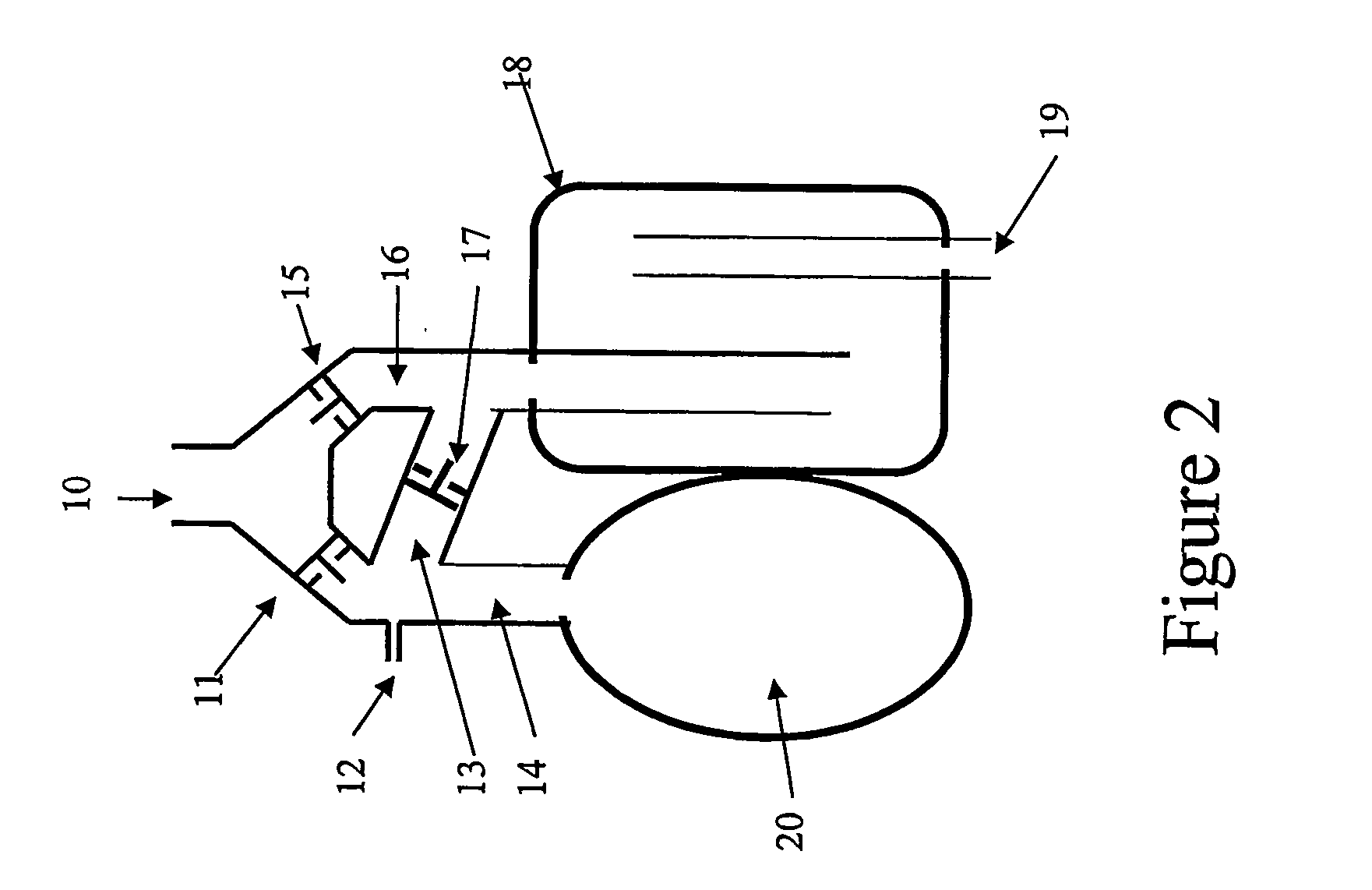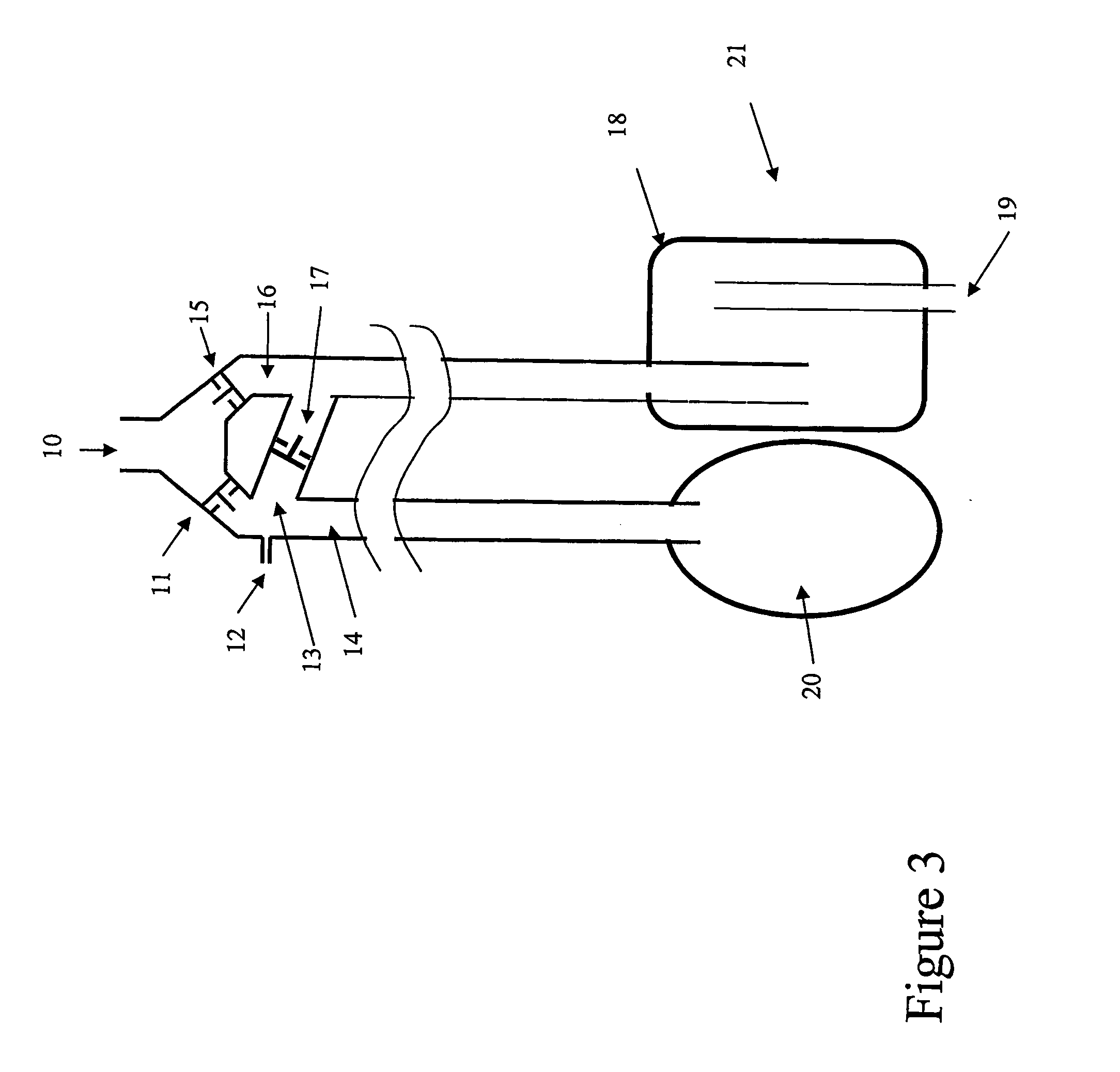Method of measuring cardiac related parameters non-invasively via the lung during spontaneous and controlled ventilation
a cardiac related and non-invasive technology, applied in the direction of respiratory organ evaluation, operating means/release devices for valves, diagnostic recording/measuring, etc., can solve the problems of reducing the accuracy of measured and calculated, and destroying the effect of all
- Summary
- Abstract
- Description
- Claims
- Application Information
AI Technical Summary
Benefits of technology
Problems solved by technology
Method used
Image
Examples
Embodiment Construction
Detailed Description of the Apparatus
[0179] Referring now to Figure ??, an apparatus is shown with the following components: [0180] 1) a breathing circuit (202), said breathing circuit preferably has the characteristic that, on exhalation, exhaled gas is kept separate from inhaled gas and on inhalation, when {dot over (V)}E is greater than the flow of a first gas set (FGS) into the circuit, the subject inhales FGS gas first and then inhales a second gas set (SGS) gas, preferably said SGS containing CO2 and where SGS may be mostly previously exhaled gas. Any SGDB circuit can be used to greater or lesser benefit, according to its characteristics. We provide below detailed descriptions of several alternate configurations and outline their particular advantages and drawbacks with respect to measuring {dot over (Q)} and related parameters outlined above. [0181] 2) a gas sample line (204.1) leading to a gas analyzer (204) that monitors the concentration of gases, for example CO2, O2, at...
PUM
 Login to View More
Login to View More Abstract
Description
Claims
Application Information
 Login to View More
Login to View More - R&D
- Intellectual Property
- Life Sciences
- Materials
- Tech Scout
- Unparalleled Data Quality
- Higher Quality Content
- 60% Fewer Hallucinations
Browse by: Latest US Patents, China's latest patents, Technical Efficacy Thesaurus, Application Domain, Technology Topic, Popular Technical Reports.
© 2025 PatSnap. All rights reserved.Legal|Privacy policy|Modern Slavery Act Transparency Statement|Sitemap|About US| Contact US: help@patsnap.com



